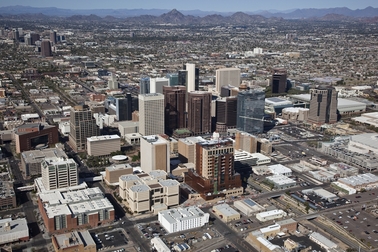View Source | September 10, 2012
 A team of researchers from Arizona State University has found that warming resulting from megapolitan expansion is seasonally dependent, with greatest warming occurring during summer and least during winter. Among the most practical ways to combat urbanization-induced warming – the painting of buildings' roofs white – was found to disrupt regional hydroclimate, highlighting the need for evaluation of tradeoffs associated with combating urban heat islands (UHI).
A team of researchers from Arizona State University has found that warming resulting from megapolitan expansion is seasonally dependent, with greatest warming occurring during summer and least during winter. Among the most practical ways to combat urbanization-induced warming – the painting of buildings' roofs white – was found to disrupt regional hydroclimate, highlighting the need for evaluation of tradeoffs associated with combating urban heat islands (UHI).
“We found that raising the reflectivity of buildings by painting their roofs white is an effective way of reducing higher average temperatures caused by urban expansion,” said Matei Georgescu, an assistant professor in ASU’s School of Geographical Sciences and Urban Planning and sustainability scientist. “However, increased reflectivity also modifies hydroclimatic processes and, in the case of the ‘Sun Corridor,’ can lead to a significant reduction of rainfall. Our maximum Sun Corridor expansion scenario leads to a 12 percent reduction in rainfall, averaged across the entire state. Painting roofs white leads to an additional 4 percent reduction in rainfall.”
Located in a semi-arid environment, the Sun Corridor is composed of four metropolitan areas: Phoenix, Tucson, Prescott and Nogales. With a population projection expected to exceed 9 million people by 2040, the rapidly expanding megapolitan offers the opportunity to identify tradeoffs focused on sustainable expansion of the built environment.
“Truly sustainable development will have to consider impacts extending beyond average temperature,” Georgescu explained. “A crucial step in that approach is to identify potential adaptation and mitigation strategies and assess tradeoffs, to ensure that we make smart decisions with minimum damaging consequences.”

